The Breguet Classique Tourbillon 5367 vs. Early Breguet Pocket-Watches – And Why it’s Such a Quintessential Breguet
Breguet's latest creation face-to-face with some of Abraham-Louis' earliest creations.
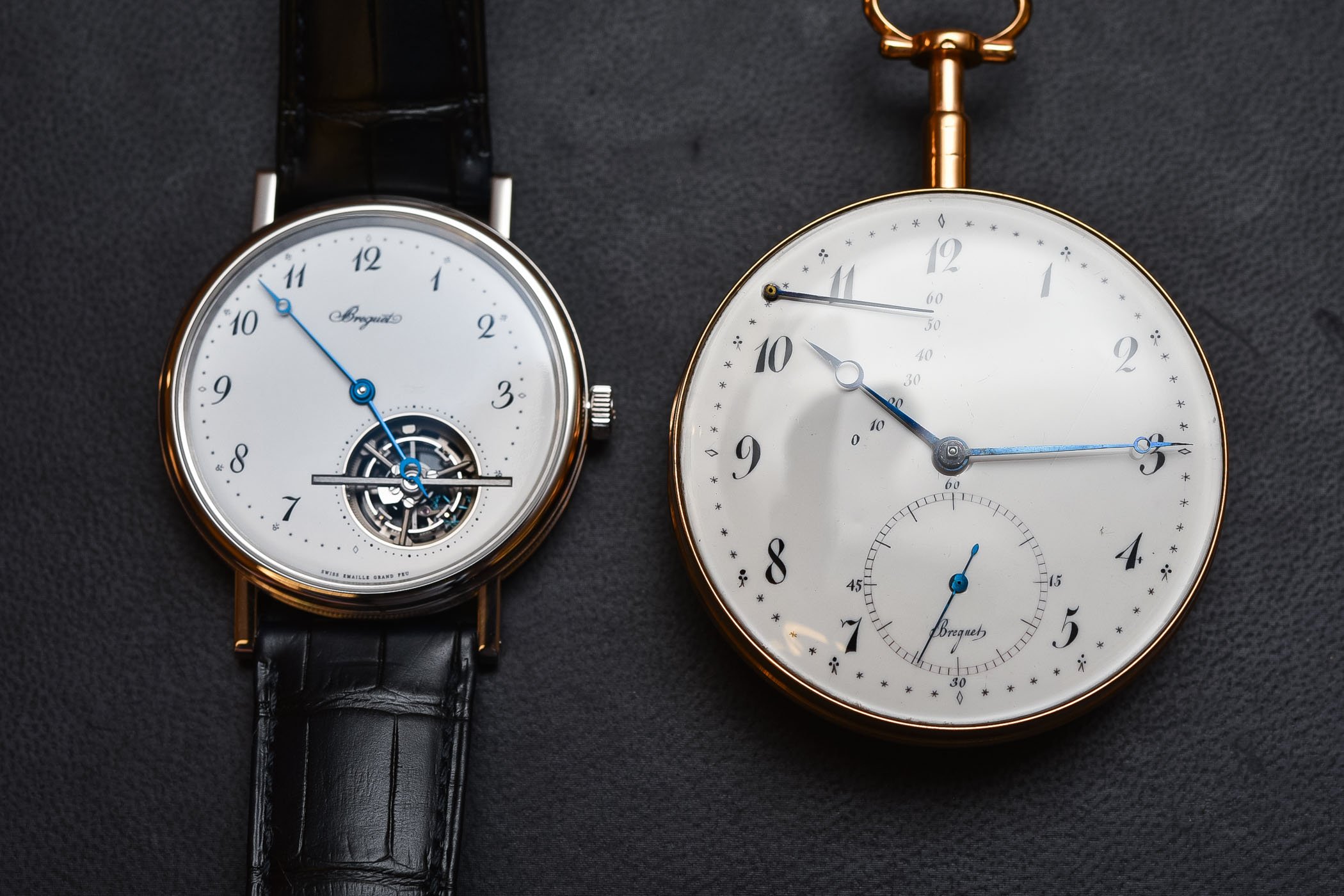
The restrained and discreet watches of the Classique Collection are unequivocal, unmistakable members of the Breguet family. Without even thinking about it, they are immediately recognisable as a Breguet. This is all due to what the Maison names the “unmistakable signs” or the quintessential design codes used by the brand for over two centuries. In order to understand exactly what this means in modern-day creations, we’ve visited the Breguet Museum in Paris, talked with Emmanuel Breguet and bring you the brand’s latest creation – the Breguet Classique Tourbillon 5367 – next to two of the most important and earliest creations of Abraham-Louis Breguet.
“Revival piece”, “vintage-inspired watches” or “re-edition”… You’ve certainly heard these expressions dozens of times. For over 10 years now, most brands are playing on the vintage trend by recreating some of their most glorious 1950s, 1960s and more recently 1970s watches. Even if they have been modernised and “testosteronised”, these vintage re-editions are also the testimony of a lack of inspiration. At Breguet, with the exception of the Type XX, things are slightly different. Instead of talking about vintage-inspired watches or revival pieces, the brand has created a clear DNA, a unique style that has prevailed for more than two centuries. Some call this conservatism, others call it continuity and consistency.
This “Breguet style” is easily defined by several design codes that the brand calls “unmistakable signs”. Most of them are well-known and have been used by many other brands in recent years: the engine-turned (guilloché) dials, the fluted case bands, the blued hands with eccentric “moon” tip, the soldered lugs, the secret signature and, of course, the Breguet numerals. Yet, we wanted to have a better feel, in the metal, of how this translates into modern-day creations. For this reason, we took the brand’s latest watch, the superb Classique Tourbillon 5367, and we brought it face to face with two of the earliest watches made by Abraham-Louis Breguet, the founder of the brand. One will be used as a case study in design – the Breguet Perpetuelle No 15 – and the second one will serve as a technical case study – the Breguet Tourbillon No 1176.
The Tourbillon 5367 – unmistakably Breguet
It was quite a surprise for us to be able to compare a 2018 watch to one of the very first watches created by Abraham-Louis Breguet, a Perpetuelle watch with Répétition des Quarts (quarter repeater). When we say “one of the first watches” it really is such a piece, and is known as No. 15 – meaning, the 15th watch created by A.L. Breguet, in around 1780. The most impressive fact is how, already that early in the history of the Maison, most of the design codes were present. And how they are still present almost 240 years later. Face-to-face, No. 15 and reference 5367 are twins…

It’s only once you have the chance (really, having such a piece of history in my hand was a chance) to put these two watches side by side that you properly understand Breguet’s consistency. Already in 1780, Breguet had developed a brand image, a DNA, a style that will define the manufacture for the centuries to come. No. 15 is a time capsule and a case study on its own. First, it is technically impressive and is one of the very first automatic watches created by A.L. Breguet, and thus, it is one of the very first automatic watches ever manufactured (period). Yet, what is even more interesting here is the design.
While most of the pocket watches manufactured at the end of the 18th century were highly decorated, Breguet created a minimalist design – which will later prove to be one of the most iconic and timeless designs ever created in watchmaking. All the elements are here: the blued hour and minute hands with an eccentric moon tip, the Breguet numerals painted on a white enamel dial, the specific position of the power reserve indicator, the minute track and indices with their distinctive shape… And all of them are found in the Classique Tourbillon Extra-Plat Automatique 5367.
It is impressive to see how the modern reference 5367 is far from being a modern creation. Again, this minimalist and emblematic sense of design is present. Certainly, the execution, the manufacturing techniques and the overall quality of the watch have drastically evolved. However, design-wise, the family ties are undeniable. Conservative, but in an elegant and relevant manner.
The Tourbillon 5367 – the worthy successor of Breguet’s inventiveness
If there’s one brand that is worthy of manufacturing a tourbillon, it is clearly Breguet. Certainly, the need for a tourbillon regulator is minimal in a wristwatch, yet the invention of the tourbillon has to be credited to Breguet himself – thanks to a patent filled on 7 Messidor, year IX (or in a non-revolutionary way, 26 June 1801).
Back at the end of the 18th century, watchmaking was already a well-mastered art and many of the complications we know today had already been invented (the perpetual calendar, the automatic watch, the minute repeater, the balance and the hairspring) and most watchmakers focused on improving the existing concepts to make watches more and more precise. One of the greatest issues encountered by watchmakers was the effect of gravity on the regulating organs. While watches today are worn on the wrist and thus constantly changing position, pocket watches were worn almost constantly in a static position. Because of that, their regulating organs were deeply affected by gravity.
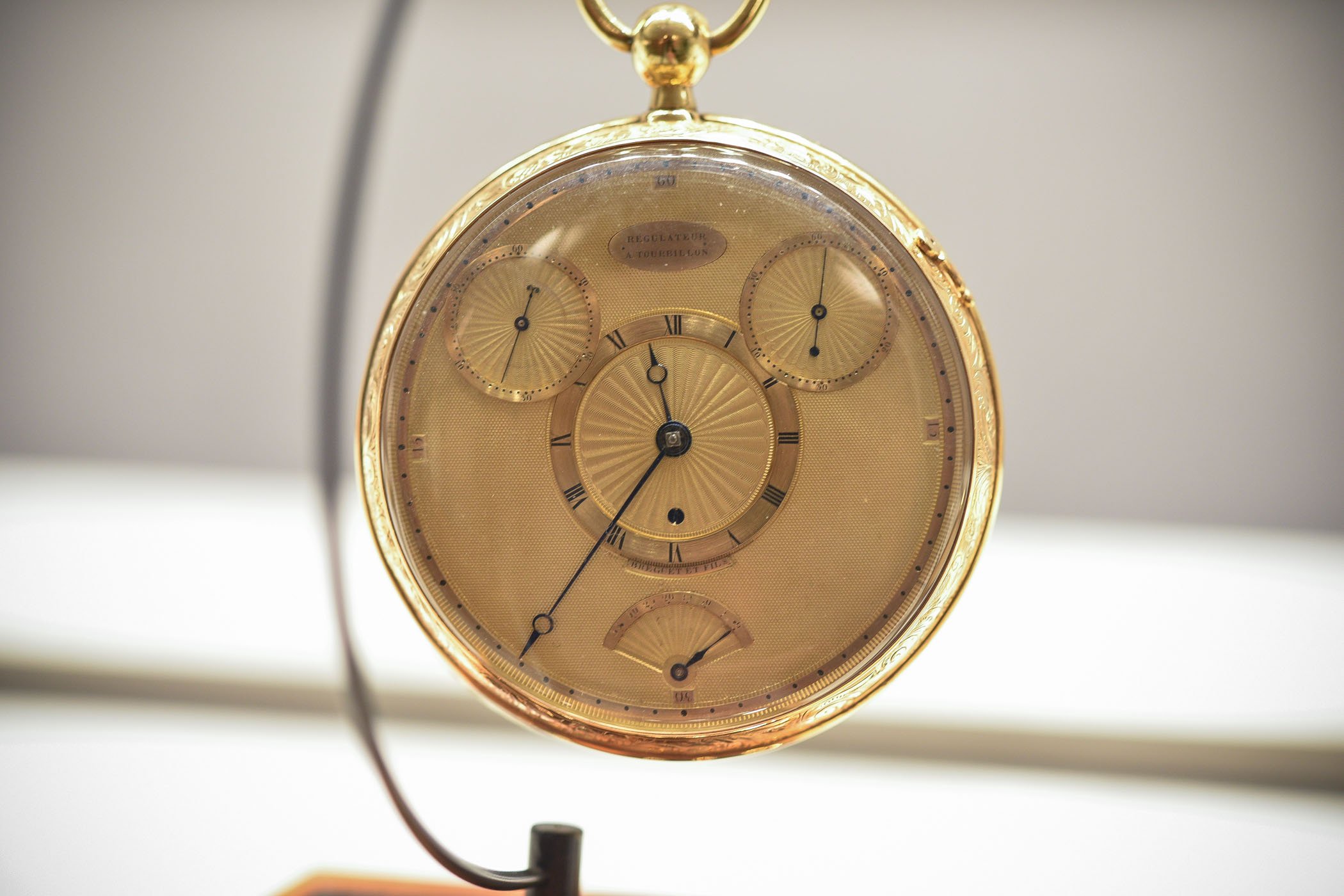
In order to solve this problem of gravity, Abraham-Louis Breguet had the idea of installing the entire escapement (meaning the balance and spring, the lever and the escape wheel, the parts that are most sensitive to gravity) inside a mobile carriage that performs a complete rotation each minute. Thus, since all the flaws are regularly repeated, they are engaged in a process of mutual compensation. Moreover, the constant change of point of contact undergone by the balance pivots in their bearings ensures enhanced lubrication.
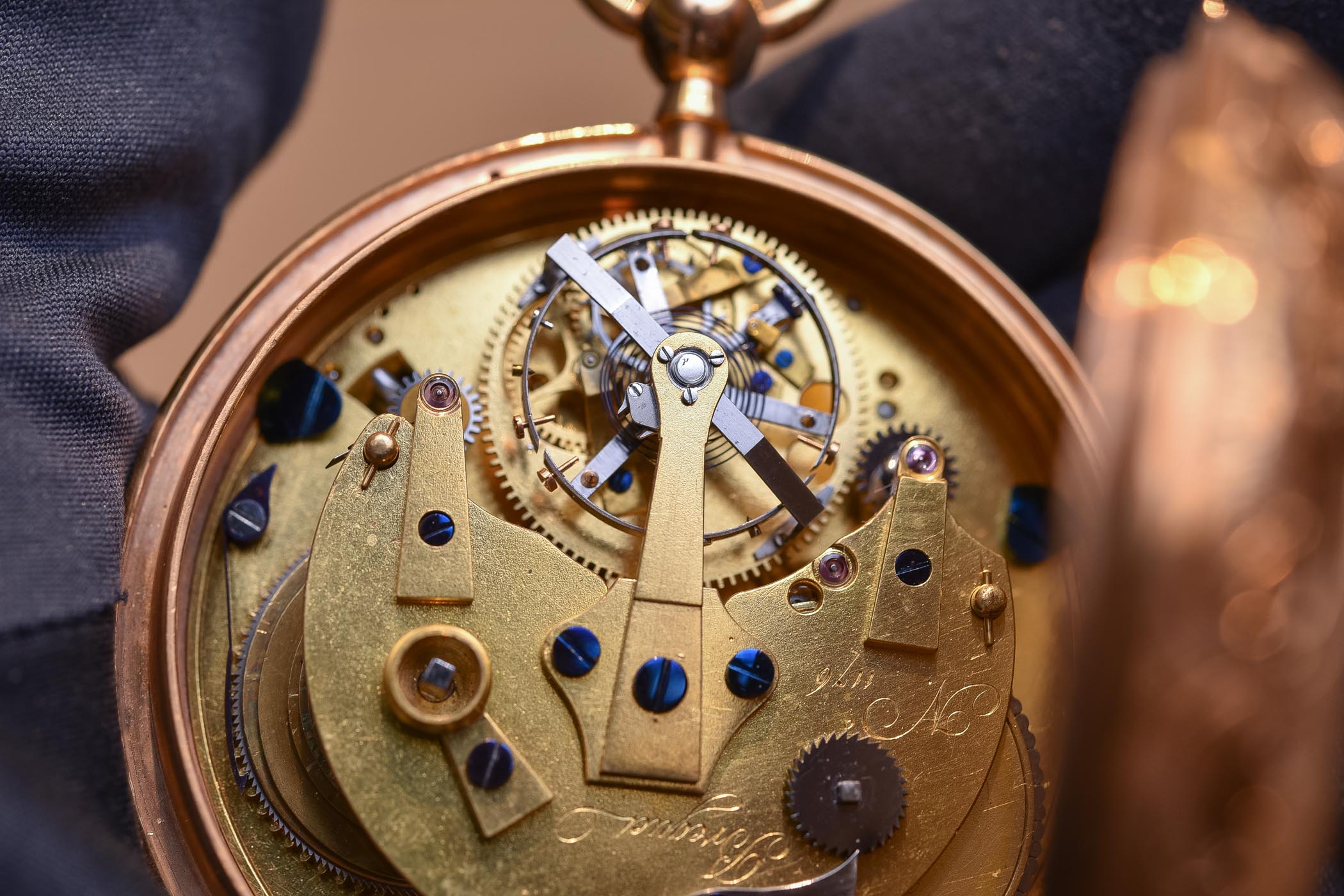
The patent for the tourbillon regulator was filed on 7 Messidor, year IX or 26 June 1801, by Abraham-Louis Breguet and later used by many of his competitors. Astonishingly, the concept has barely evolved since then, as the regulating organ found in the Tourbillon 5367 uses the exact same principles.
Yes, modern materials and manufacturing techniques allow for a greater degree of precision and miniaturisation. Yes, the Reference 5367 features an anti-magnetic silicon hairspring and escapement as well as a titanium carriage allowing for more rigidity and less weight (reducing friction and enhancing power reserve). Yet, the basic principle is the same: counteracting the effect of gravity and improving accuracy, not at a given moment but over a longer period.
The back of the Tourbillon 5367 reveals a discreet but relevant mention of Breguet’s patent, and the transversal bridge underneath the tourbillon is engraved with “Brevet du 7 Messidor An 9”. Certainly, the tourbillon has become more of an artefact than a true technical need – hence the reason why tourbillons are now visible from the dial side – however, here again, Breguet’s legacy is clearly respected.
The Breguet Tourbillon 5367 itself
Besides the visual and technical legacy that this watch bears, the Breguet Classique Tourbillon Extra-Plat Automatique 5367 Grand Feu Enamel (a mouthful…) is far more than a revival/legacy piece. It is also a modern technical feast. The 5367 is the enamelled and cleaned evolution of the Reference 5377 launched in 2013 – the 5367 replaces the guilloché dial with an enamel dial and gets rid of the power reserve indicator at 9 o’clock. However, just like the 5377, the present Ref. 5367 is technically an advanced watch.
When introduced, it was amongst the thinnest automatic tourbillon watches ever created. Of course, with its 3mm thick movement and a 7mm thick case, it has been surpassed by several watches (incl. the recently presented Bulgari Octo Finissimo Tourbillon Automatic) but it remains one of the thinnest automatic watches on the market. How did Breguet manage to do that? The solution is now well-known. Instead of having a central rotor and a winding mechanism located on the top of the movement, the Breguet Tourbillon Extra-Thin Automatic 5377 comes with a peripheral rotor and a mechanism located on the side of the movement. The added thickness due to the automatic system is thus cancelled out. With no rotor hiding the movement, you can admire the amazing engraving work on the bridges.
The Breguet Tourbillon 5367 is visually truly classic – or at least timeless – without ignoring modern tastes. Indeed, its almost antique enamel dial is enclosed in a 42mm case (available in platinum or in 18k pink gold), making it a watch with some presence on the wrist. This duality between the pocket-watch-like dial and the modernity of the proportions and technical solutions is never disturbing and surprisingly, this watch feels unaffected by trends endowing it with an ageless quality. On the wrist, the thinness of the case and the elegance of the straight soldered lugs and of the fluted case bands give the 5367 a clear nobless.
The Breguet Classique Tourbillon Extra-Plat Automatique 5367 is an impressive watch, not because of its exuberance, but because of its heritage and how it respects the name of Breguet, without succumbing to the sirens of the vintage re-edition trend. Ultra-thin but with some wrist presence, classic/timeless and modern at the same time, elegant but never conservative…
The Breguet Tourbillon 5367 is priced at EUR 157,600 in platinum (ref. 5367PT/29/9WU) and EUR 143,700 in pink gold (ref. 5367BR/29/9WU). More details on breguet.com.

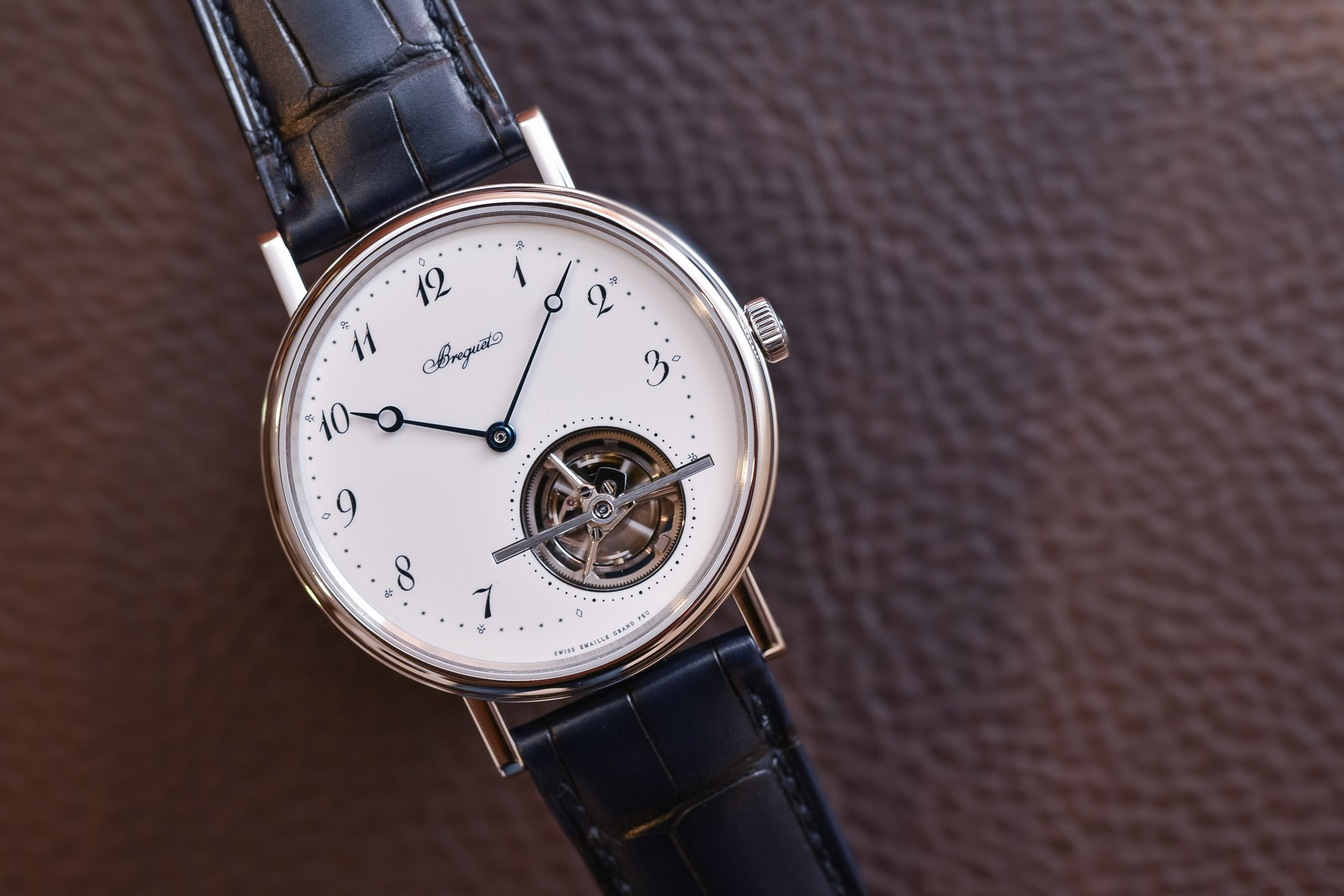
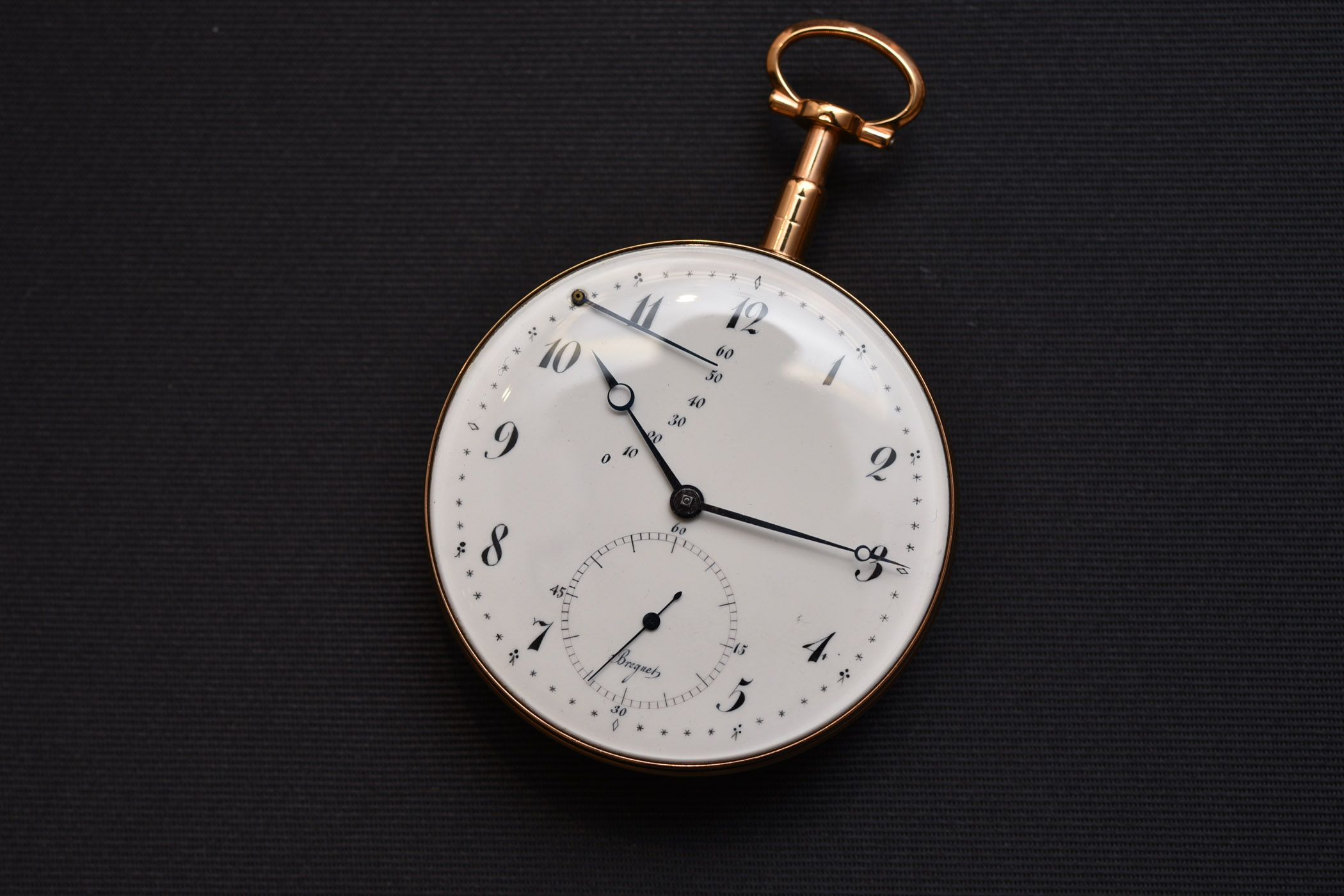
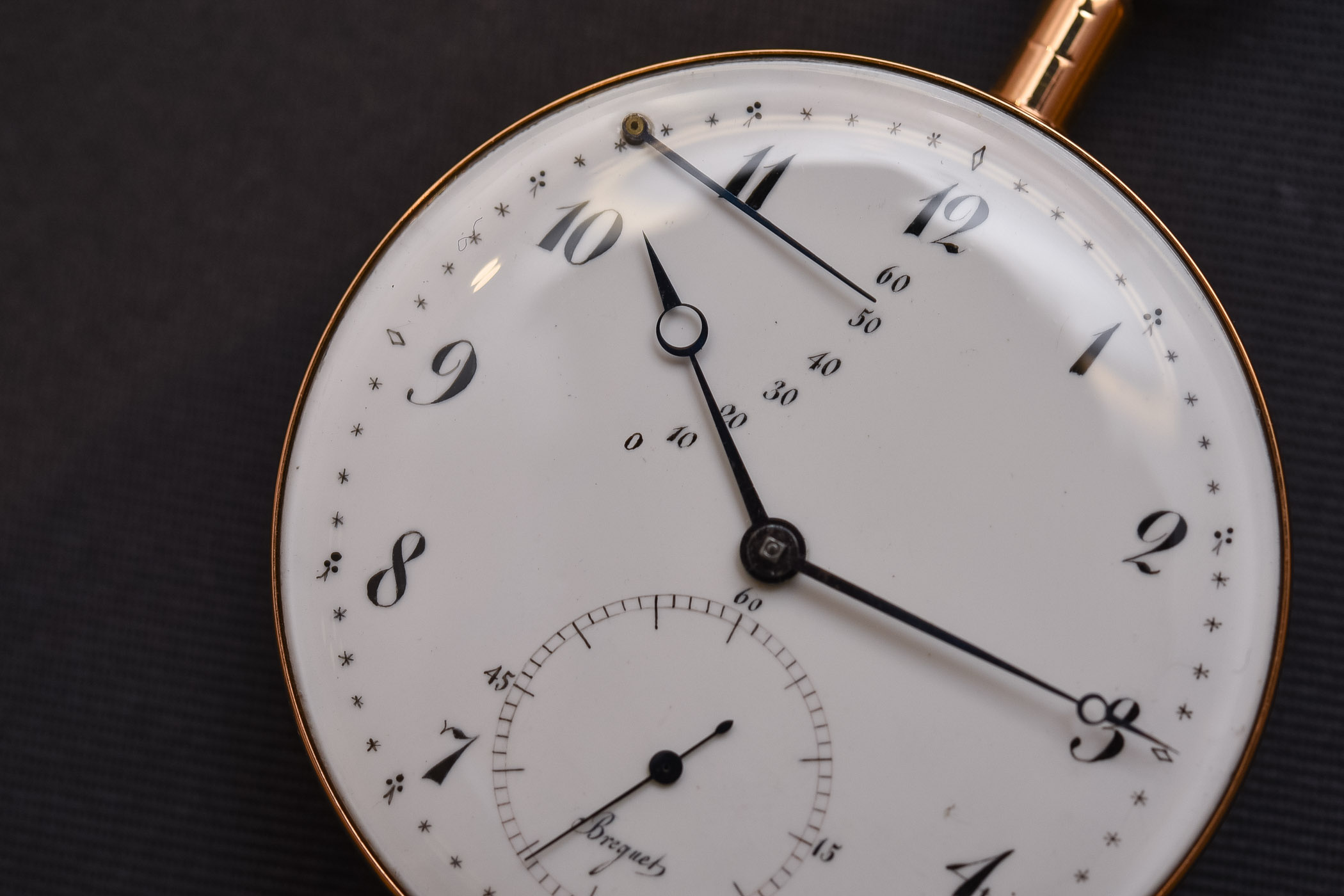
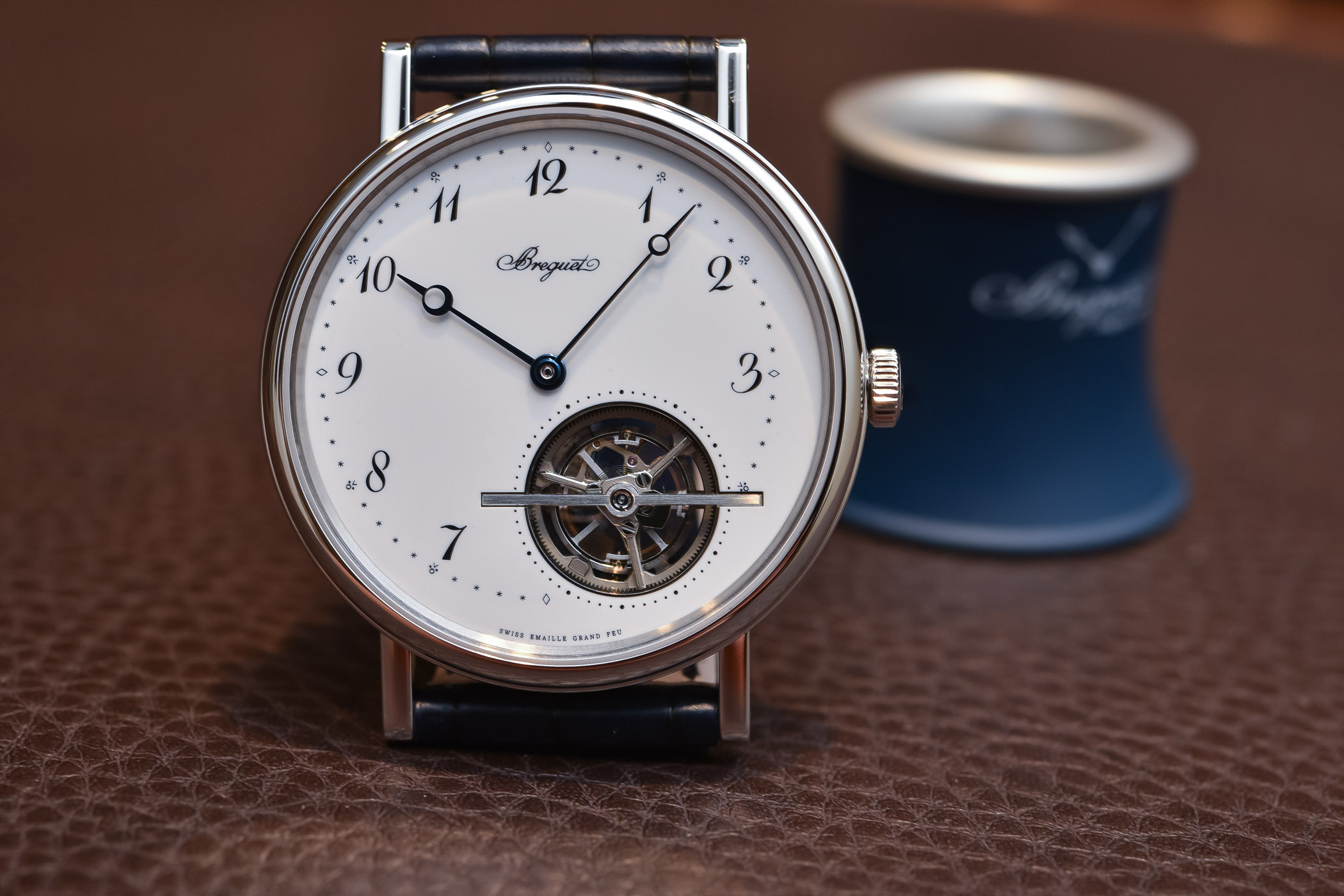
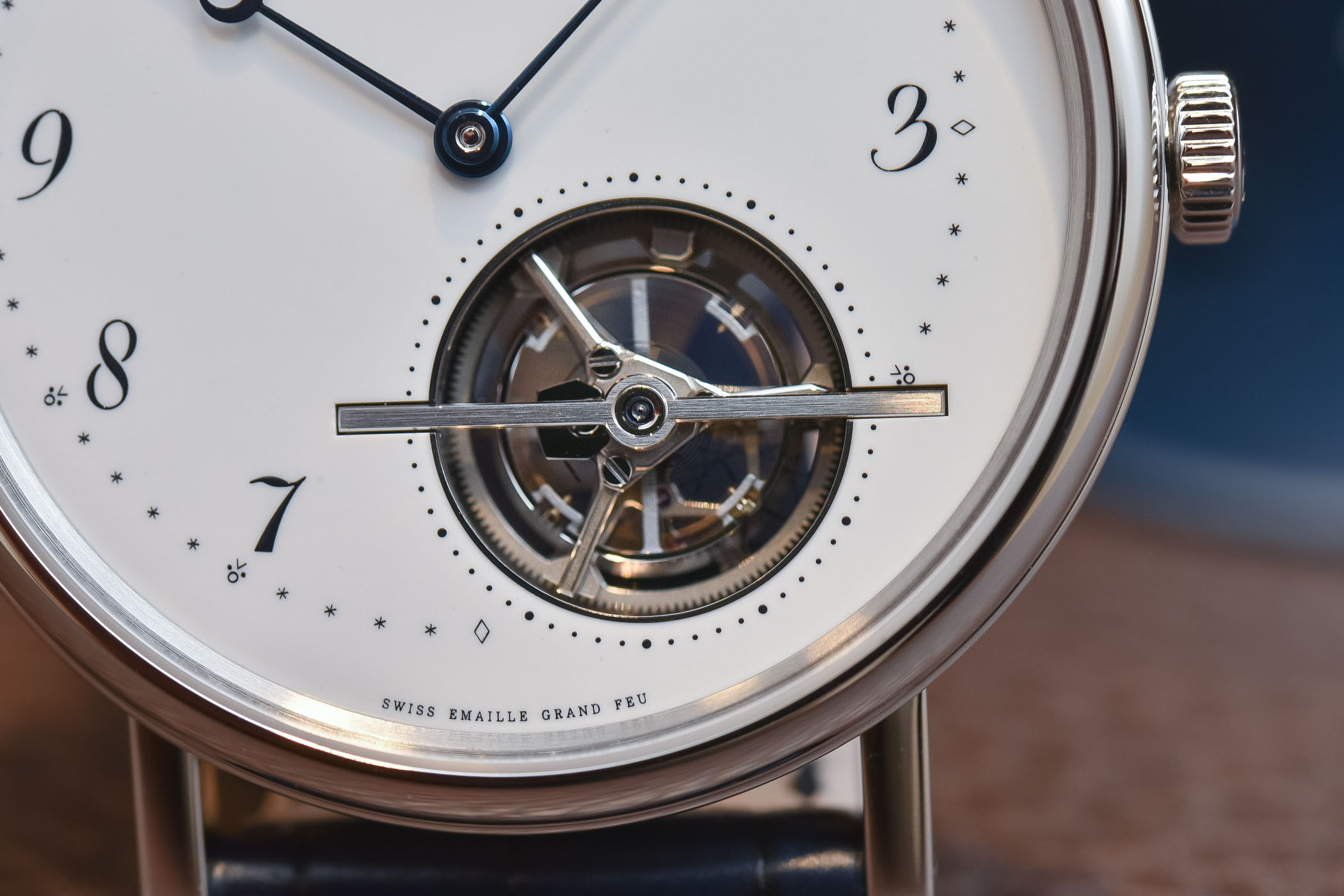
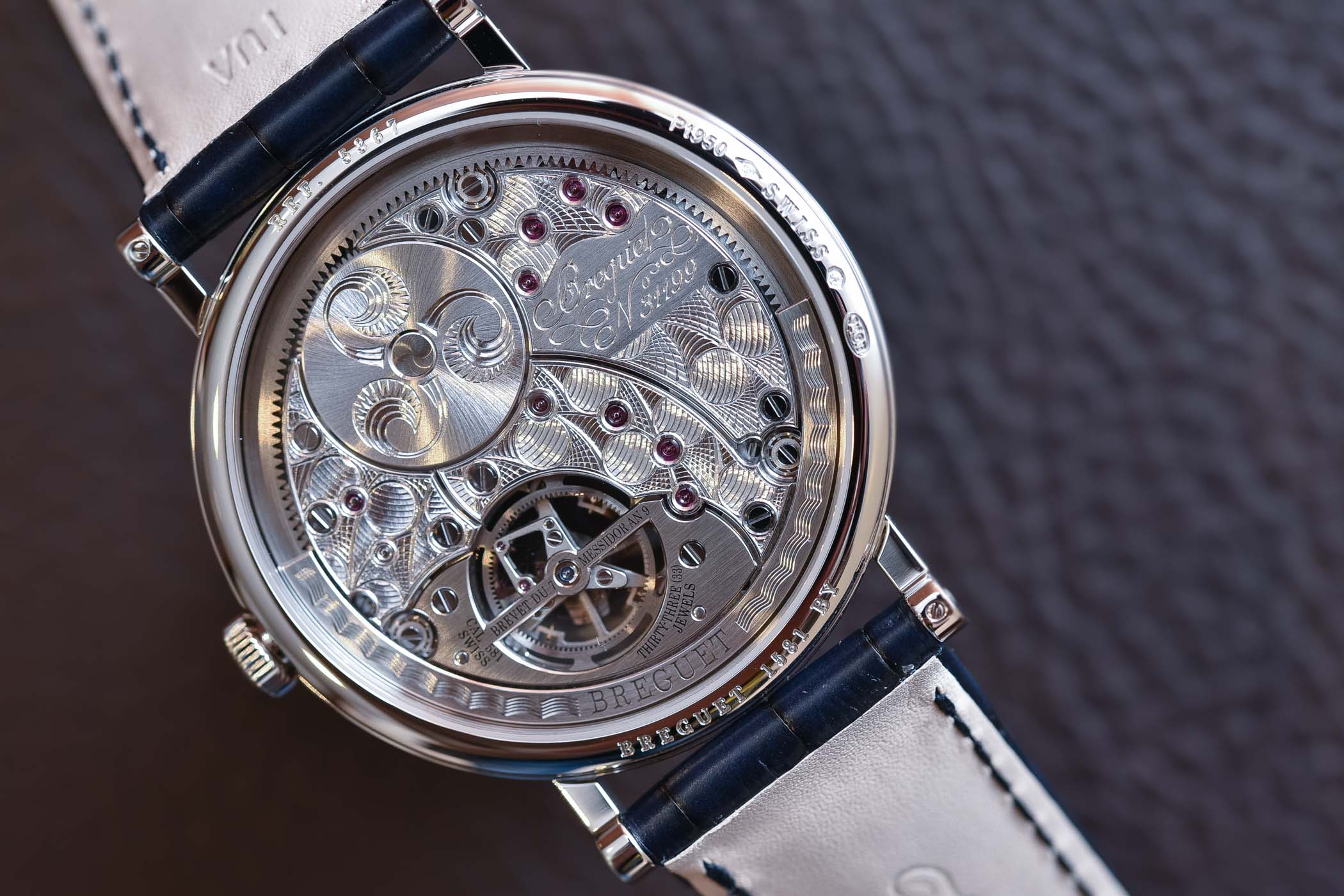
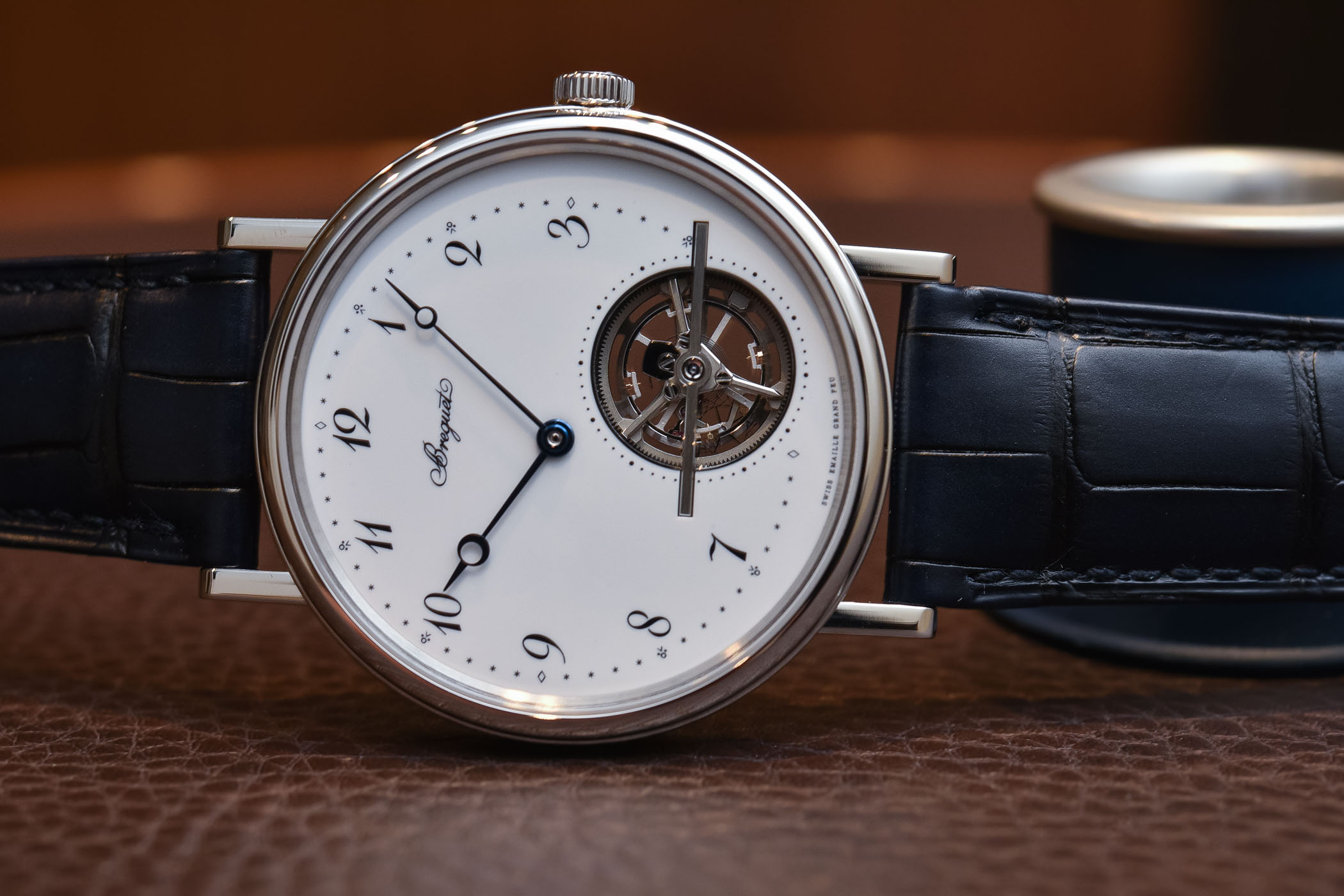


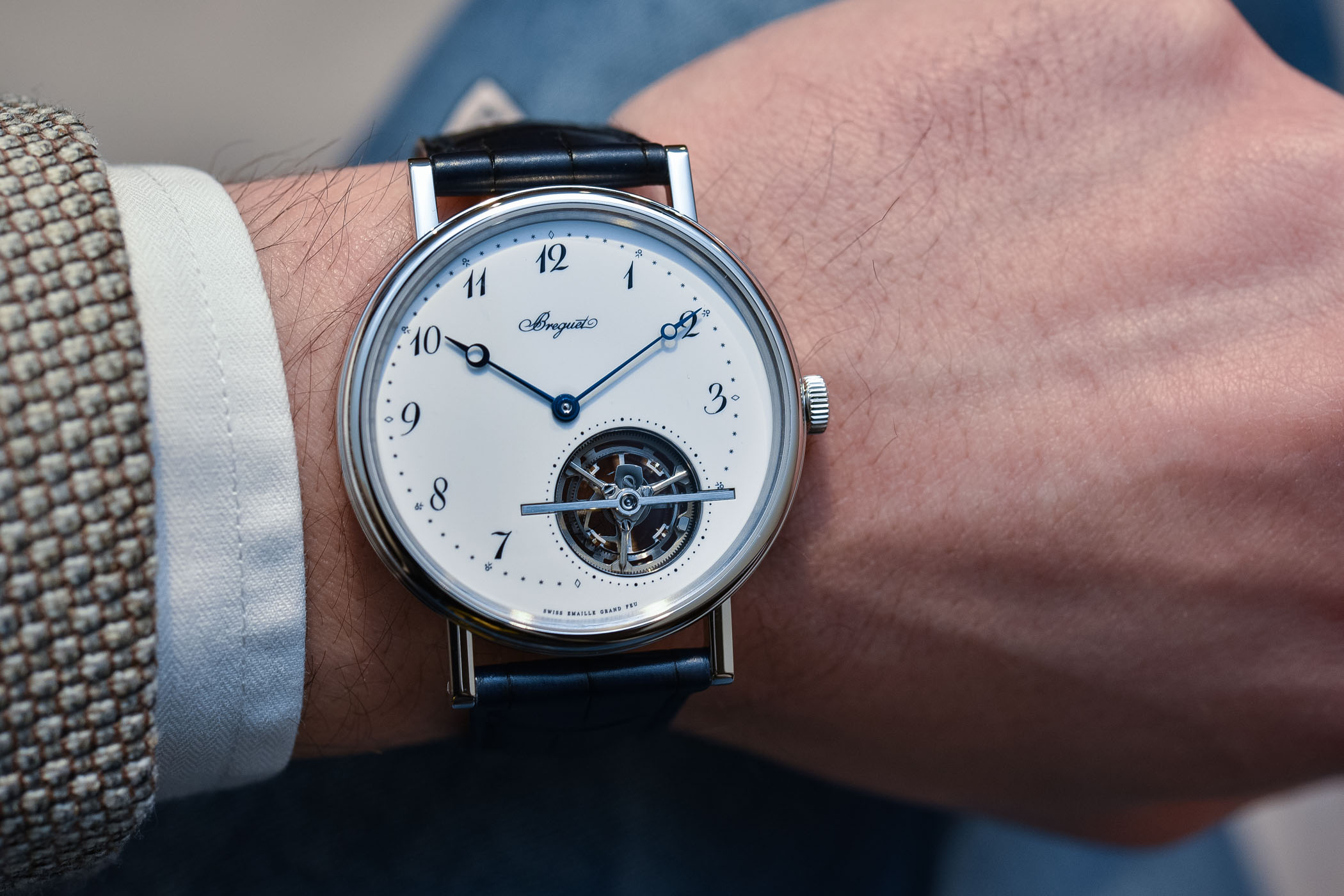



2 responses
Thank you.
I take your point about the elegance of straight soldered lugs.
I have a vintage dress Bucherer that has straight soldered lugs and I never fully realized the difference they make to the look of the watch.
What can one say? It is sublime.